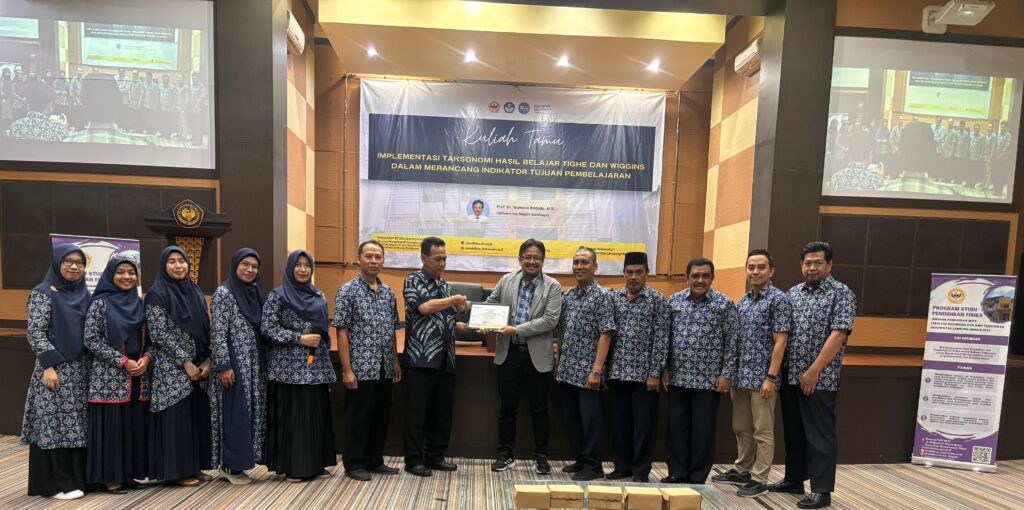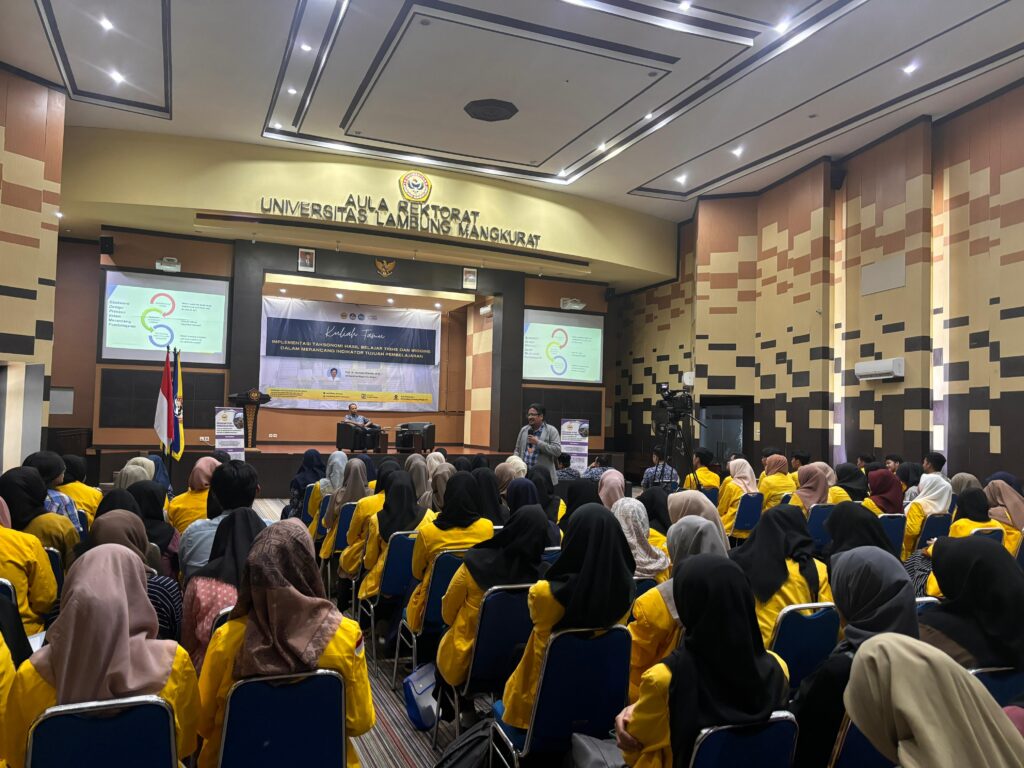17/05/2024

Banjarmasin – In order to strengthen the academic atmosphere, the Physics Education Study Program (PS), Faculty of Teacher Training and Education (FKIP) Lambung Mangkurat University (ULM) held a Public Lecture on Friday, May 17, 2024. This guest lecture presented Professor of Surabaya State University (Unesa), Wahono Widodo with the theme of the lecture, Implementation of McTighe and Wiggins Taxonomy of Learning Outcomes in Designing Indicators of Learning Objectives. The Public Lecture was opened by the Head of the Department, Syahmani and attended by lecturers and students in the Physics Education Study Program of FKIP ULM. The activity was held in the ULM Rectorate Hall 1st Floor starting at 14.30 WITA.
According to the Coordinator of the Study Program (Korprodi) Abdul Salam, this public lecture was raised based on the scale of needs needed at this time in the process of implementing the Merdeka Curriculum. “So far, students have only been treated to Bloom’s original cognitive taxonomy and its revision by Anderson. Meanwhile, in the learning and assessment guidelines published by the Education Standards, Curriculum and Assessment Agency, Kemendikbudristek, alternative taxonomies of learning outcomes are mentioned. The taxonomy of learning outcomes mentioned there include Marzano’s Taxonomy and Levels of understanding by Wiggins and McTighe,” he said. Furthermore, Abdul Salam explained, this public lecture focused on discussions related to 6 aspects of ability that show one’s understanding by Wiggins and McTighe. The combination of abilities in question is explanation, interpretation, application, perspective, empathy, and self-recognition or self-reflection.
In his presentation, the speaker explained, in Wiggins’ perspective, understanding something is not just C2 in Bloom’s cognitive process dimension. Furthermore, ‘understanding’ has two general connotations, namely applying your understanding, knowledge and skills effectively in new situations (resulting in successful transfer), and making inferences (interpretations, conclusions) and finding patterns / meanings, which lead to understanding. Thus, understanding describes the ability to (1) transfer, (2) make meaning, (3) acquire new knowledge and skills.
Transfer means being said to truly understand when being able to take what has been learned in one way or context and use it in another, in our own way. Meanwhile, meaning includes the birth of an idea resulting from one’s (the student’s) reflection and analysis; or an important generalization, a new insight, a useful realization that makes sense of fragmented or confusing prior experience or learning; or a “theory” within the student in the broadest sense; or the result of inference and testing of ideas by the student (with the teacher’s help), as needed-culminating in an idea that seems useful and describable to the student. On the other hand, acquisition can be understood as a condition that leads to the acquisition of new knowledge and skills. “Thus, understanding is a higher-order thinking process, not simply using information to explain or answer a question. According to Wiggins and McTighe, understanding can be shown through a combination of six aspects of ability,” he explained. (admin)

